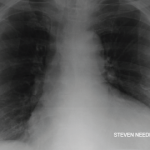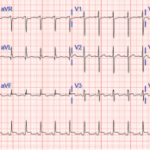NEW YORK (Reuters Health)—New European League Against Rheumatism/American College of Rheumatology (EULAR/ACR) classification criteria can be used to identify patients with systemic lupus erythematosus (SLE) in an unselected group of patients hospitalized for pericardial effusion, new findings show.1
“Overall, in patients with pericardial effusion and positive ANA, the diagnosis of SLE could be ruled out when 2019 SLE EULAR/ACR criteria score was [less than] 10 and confirmed when the score was [greater than] 12,” Dr. Karim Sacre of the University Paris Diderot and colleagues conclude in the Annals of the Rheumatic Diseases.
Dr. Sacre and colleagues reviewed records for 137 consecutive pericardial effusion patients admitted to their hospital, a competence center for rare systemic autoimmune diseases, between 2009 and 2019. Of the 129 patients who underwent antinuclear antibody (ANA) testing at diagnosis, 49 (38%) had an ANA titer of at least 1:80 on Hep-2 cells.
These patients included 17 (34.7%) with a final diagnosis of SLE, six (12.2%) with an autoimmune disease other than SLE and 26 (53.1%) with idiopathic pericarditis.
All of the patients with SLE met the 2019 EULAR/ACR criteria, compared to 33.3% of the patients with non-SLE autoimmune diseases, and 11.5% of those with idiopathic pericarditis. The new criteria were 100% sensitive and 84% specific.
Patients with SLE were more likely to be young and female and had higher ANA titers. The patients with idiopathic pericarditis were more likely to have cardiac tamponade.
“Interestingly, non-SLE autoimmune disease features appeared to belong to a spectrum between SLE and idiopathic pericarditis,” Dr. Sacre and colleagues write.
“This study shows that the new 2019 SLE EULAR/ACR criteria for SLE are helpful in clinical practice for the diagnosis of SLE in patients admitted for pericardial effusion,” they conclude.
Reference
- Sacre K, Delaval L, Dossier A, et al. New 2019 SLE EULAR/ACR classification criteria are valid for identifying patients with SLE among patients admitted for pericardial effusion. Ann Rheum Dis. 2019 Dec 6. pii: annrheumdis-2019-216712. [Epub ahead of print]



